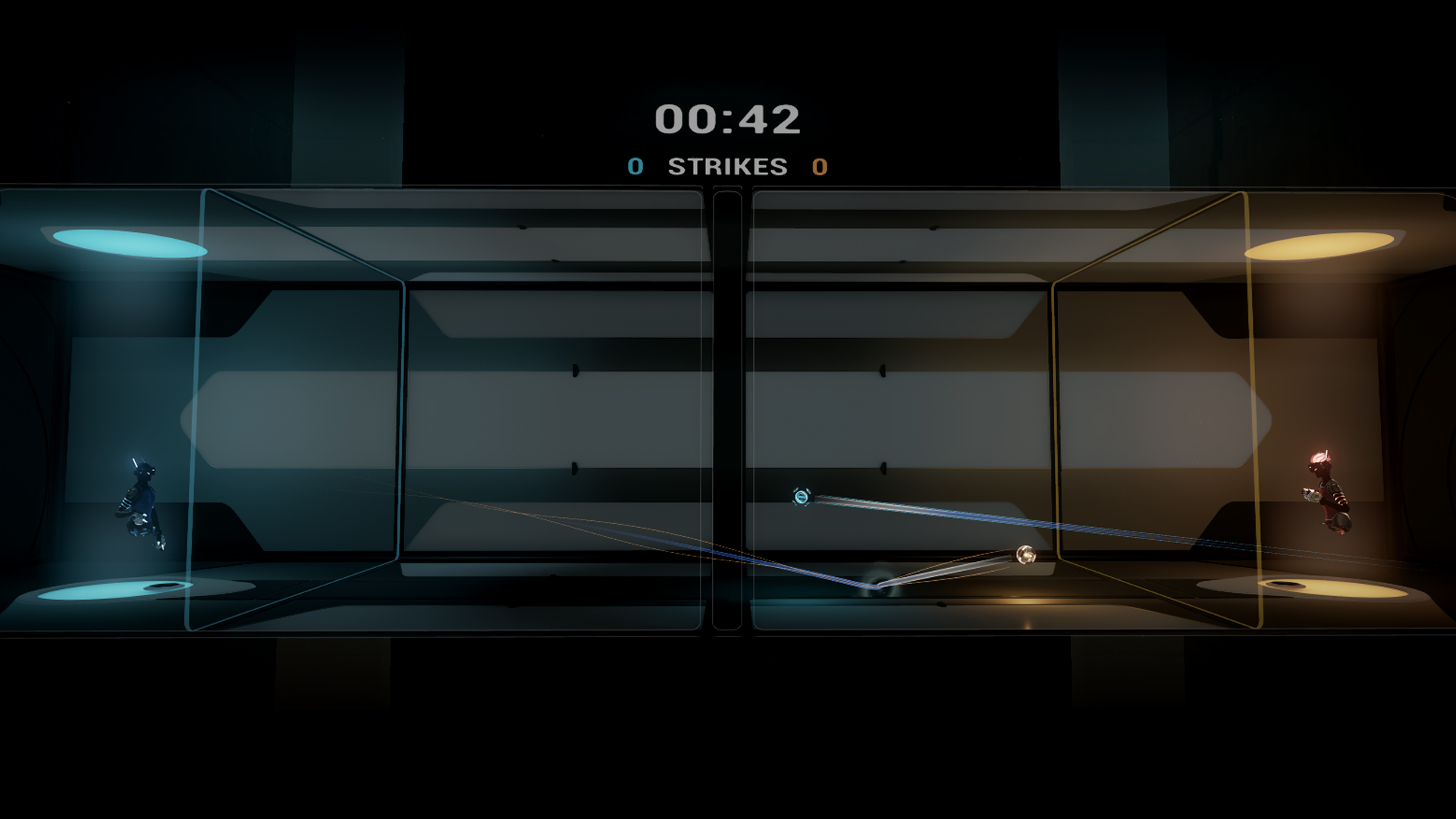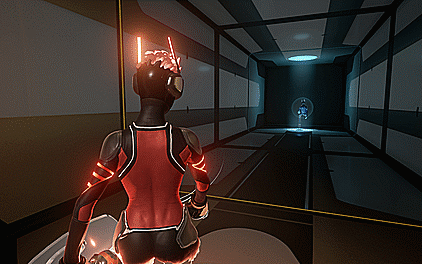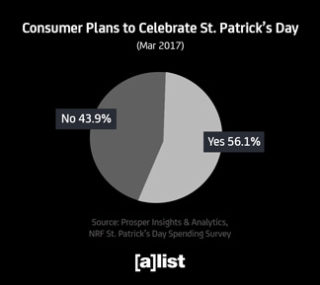SXSW has evolved into one of the world’s most preeminent interactive activation playgrounds celebrating technology, marketing, music and film and endless open bars in greater Austin.
If you’re a Mad Men-like marketer who has interests of pushing a brand message further—not to mention the limits of the human body during a 10-day party masked as a conference—then you must descend to the Lone Star State every March for a slate of events and programming that will inspire ideation in your respective discipline.
Fittingly, the current political climate was a pressing topic at panels, too. Even former vice president Joe Biden came to town for the conference and delivered a tearful speech.
“Keep Austin Weird” is the slogan of the city, and no two companies did that shockingly better than Hulu and Bravo.
To garner attention for their new upcoming show Stripped, cable TV network Bravo unveiled 60 models dressed in nude fabric in an activation that spread from the Austin Convention Center to jam-packed Sixth Street. Rain or shine, the flash mobs of models moved across downtown—some days with men covering their waistlines with just a pizza box, and women covering their frames with trash bags. The shock marketing stopped people to ask “What’s going on?” only to follow it up with some snap shots for social. Mission accomplished.
Meanwhile, Hulu’s activation was a wee bit creepier—albeit somewhat political. To promote their new show The Handmaids Tale, the on demand subscription video service shelled out a swarm of mysterious-looking women dressed like handmaids to further portray the symbolism behind the series. Clad in red garb, women silently strolled the streets and randomly conducted communal congregations. Offering no explanation to their appearance, they handed out cards that read “Don’t let the bastards get you down” to anyone who would approach them. Although it was silent, Hulu’s message certainly still made a splash in the city.
With so many people being present from the film industry, or just movie buffs in general, SXSW is the opportune time to promote a show.
An activation that screamed “fan appreciation” more than “be sure to check us out!” was AMC taking over a parking lot for a pop-up Los Pollos Hermanos restaurant in anticipation of season three of Better Call Saul. Show stars Bob Odenkirk and Giancarlo Esposito also made an appearance for an autograph session. The only underwhelming part of the restaurant was that there was no chicken—only some samples of Gus Fring’s curly fries. The kitchen was closed to the public, so we really didn’t know what else was cooking back there.
Others shows with outdoor activations were Starz with a King Kong-sized bison for American Gods, and TNT with a giant wave-riding pool for Animal Kingdom.
If you’re a marketer ever interested in putting on a SXSW showcase yourself, be sure to factor in for abnormal weather that locally ranges from sweltering heat, to non-stop rain. It could really alter foot traffic.
Conveniently tucked away in the dry yet frenzied confines of an ACC ballroom was The Mummy Zero Gravity VR Experience, an activation that transported attendees to the movie’s set alongside Tom Cruise and Annabelle Wallis as they performed a stunt in Zero-G four miles above sea level.
Also in the business of promoting a show, but this time from an experiential brand house was National Geographic, who is fully getting ready to launch Genius, a series that explores the life of Albert Einstein.
With SXSW timed perfectly with Pi Day on March 14, they celebrated Einstein’s birthday with a week-long session of programming with “Further Base Camp,” which featured an AR activation, a robotic portrait of Einstein’s chalkboard and an interactive photo gallery.
“We wanted to engage viewers globally with this brand-defining, first fully-scripted series that will tell the dramatic, inspiring and untold story about the life of Albert Einstein,” Jill Cress, chief marketing officer at National Geographic, told [a]listdaily. “We hope to launch our new tagline ‘Further’ as the consumer-facing expression of the brand and inspire people to fall in love with our renewed, forward-thinking brand and build on the insight that your heart will take you further than your mind ever will.”
In addition to National Geographic, large tech and media companies like Dell, IBM Watson, Panasonic, Sony, Intel, Facebook, YouTube, Pinterest, Mashable, Comcast, Dropbox, Adidas, Levi’s, Gatorade, Giorgio Armani, Otterbox and Naked Juice borrowed local Austin staples as their headquarters for the week to create conversations with consumers through a variety of experiences.
Activations ranged from immersive experiences to Plain Jane freebies to panel discussions, and of course, plenty of beer and nosh. The casual SXSW atmospheres serve as a forum to either be educated, or relax and hob nob with fellow attendees and cultivate relationships to further business for the remainder of the year.
Mazda, Capital One, Monster and Pandora served as title sponsors for SXSW, and they each had unique experiences ranging from music to tech. Esurance, McDonald’s and Bud Light also were title sponsors, but they did not blow attendees away with large scale experiences as they have as recent as last year.
Amy Heidersbach, vice president of marketing for Capital One’s digital division, told [a]listdaily that their branded house at Antone’s was a marketing reflection of what the company believes in.
“The whole experience that we brought to Austin is about being beta brave,” she said. “Whether or not we work in technology, it’s the spirit, attitude and courage of thinking differently, which is what the people of SXSW already have. We wanted to give them a peek of how we’re being beta brave as well.”
Russel Wagner, Mazda’s vice president of marketing, told [a]listdaily that sponsoring SXSW for the last three years has been a no brainer to them.
“When we look at who our target audience is of highly educated, affluent people who are definitely looking to be on the cutting edge of film, music and technology. SXSW serves to be a logical partnership for us,” Wagner said. “The results in engagement on social and on-site activations have far exceeded what we’ve set out to do.”
Mazda invited attendees to explore the brand’s design and engineering spirit, and its technology at the Mazda Studio at Empire. Their presence with a complimentary ride service was felt even more than ever this year as the city was devoid of Uber and Lyft. Mazda also had a music showcase on an intimate outdoor stage featuring acts like Rick Ross.
Susan Panico, vice president of sales marketing at Pandora, told [a]listdaily that the main message Pandora is promoting at SXSW is that #MusicIsLife.
“With the thousands of people that come through our space over the music days, specifically, they really look at Pandora for being that connective tissue that helps bring them new and emerging artists, and expose them to music that they didn’t know, but it turns out being music that they will love,” Panico said. “That’s what our personalized music discovery service is all about. There’s a balance of not only having the live music, but also partnering with advertising partners to bring in activations into our space to ensure there are engaging experiences that people want to share on social. The way that we show up at SXSW is giving people experiences and wonderful music memories.”
Rapper T.I. blew the lid off the Pandora house Tuesday on the same night as Wu Tang Clan, Wale, Thievery Corporation and Erykah Badu did for Events DC, who earlier in the week became the first local, city and state convention and tourism board to sponsor eSports. Events DC arguably had the most anticipated show of the festival as they packed the 2,750-person Austin City Limits venue to the brim before Wu tore the place down.
Before the climactic show, the WeDC House hosted 23 ambassadors that represented the District and furthered the ultimate goal at SXSW of expanding the city’s technology sector, promoting DC’s innovative startup community and fostering new partnerships among the local and national business communities.
Another city to join the experiential madhouse in promoting its region as a hot bed filled with career opportunities and rich culture and community was Atlanta with its ChooseATL branded house, where musicians like Ludacris, Jermaine Dupri and Rich Homie Quan took turns either speaking, spinning or singing at Maggie Mae’s on Sixth Street.
Kate Atwood, executive director of ChooseATL, said: “We crafted a three-day SXSW experience that promises to ignite new ideas, create business opportunities and increase the world’s sense of connectivity to our vibrant region and people.”
Countries that also brought their unique flair and heritage to Austin included The Great Britain House, Be Brasil, Casa Argentina, German Haus, Japan Factory and French House.
However, for the first time in recent memory, SXSW programming seemed to be the focal point over large-scale, expensive activations and experiences, as well as a slew of start-ups hitting the scene.
With major FOMO occurring at all times, there definitely is no shortage of experiential options both intimate and grand to explore at SXSW.
It just requires fireman-like instincts for skipping the smoke and finding the flames.
Follow Manouk Akopyan on Twitter @Manouk_Akopyan




 According to NRF’s annual survey conducted by Prosper Insights & Analytics, more than 139 million Americans plan to celebrate the Irish holiday this year, and are expected to spend an average of $37.92 per person. Fifty-six percent of those surveyed plan on celebrating St. Patrick’s Day, with 88 percent of those celebrants wearing green to kick off the festivities.
According to NRF’s annual survey conducted by Prosper Insights & Analytics, more than 139 million Americans plan to celebrate the Irish holiday this year, and are expected to spend an average of $37.92 per person. Fifty-six percent of those surveyed plan on celebrating St. Patrick’s Day, with 88 percent of those celebrants wearing green to kick off the festivities.
